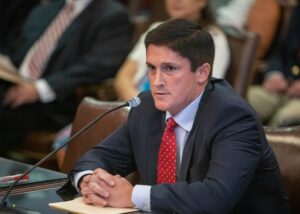Washington, DC
Renewables Law Blog
(By Ashley Krick)
 On September 8, 2021, the Department of Energy (DOE) released its Solar Futures Study providing a blueprint for the role of solar energy in decarbonizing the nation’s power sector. The 310-page Study outlines a future in which solar provides 40% of the nation’s electricity supply by 2035 through cost reductions, technological improvement, rapid deployment, and supportive policies. And, with the electrification of buildings and the transportation sector, solar could also power 30% of all building end uses and 14% of transportation end uses by 2050.
On September 8, 2021, the Department of Energy (DOE) released its Solar Futures Study providing a blueprint for the role of solar energy in decarbonizing the nation’s power sector. The 310-page Study outlines a future in which solar provides 40% of the nation’s electricity supply by 2035 through cost reductions, technological improvement, rapid deployment, and supportive policies. And, with the electrification of buildings and the transportation sector, solar could also power 30% of all building end uses and 14% of transportation end uses by 2050.
The Study identifies several policy initiatives needed to support the deployment of solar at this scale, including decarbonization targets, R&D investments and cost reductions, changes to wholesale electricity market regulation, and transmission development, to name a few. In order to meet the 40% by 2035 goal, the Study estimates that the U.S. must install an average of 30 GW of solar capacity per year between now and 2025 and 60 GW per year from 2025-2030, with a total of 1,000 GW of solar deployed by 2035. If the solar industry sees this level of growth, the Study estimates that the industry could employ up to 1.5 million people by 2035. The Study also highlights the important role that battery storage and demand-side management will play given that solar power varies based on daily and seasonal patterns.
With solar power currently providing approximately 3% of the nation’s electricity supply, the DOE’s 40% goal will be contingent on many factors supporting the industry in the coming years, including cost reductions, supportive policies, and widespread deployment.
Tags: Department of Energy, DOE, renewable, renewable energy, solar, solar energy

